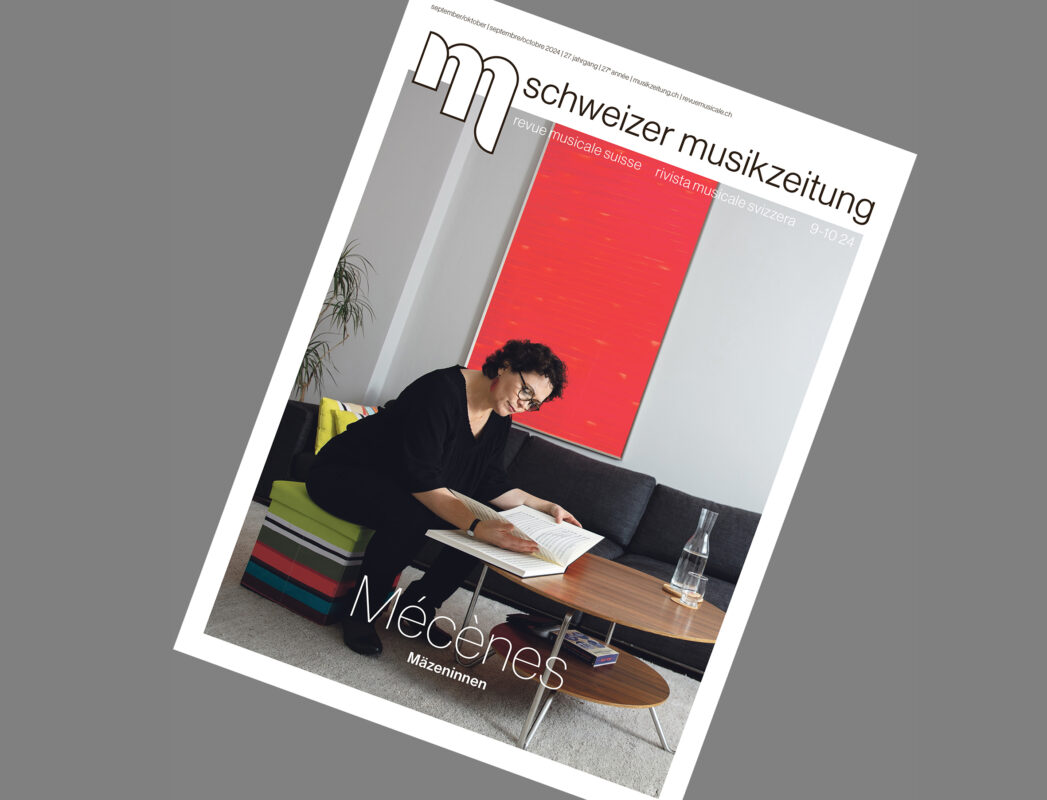The hammered dulcimer in Switzerland
ici
Résumé français
Le résumé français se trouve ici.
Literature, discography and links
Pictures
The following photo gallery complements the article by Brigitte Bachmann-Geiser Dulcimer in Switzerlandwho is in the Swiss Music Newspaper 5/2014 was published.
The pictures come from Brigitte Bachmann-Geiser's archive, which she has built up over 40 years of research. The images may not be copied. Anyone interested in individual illustrations should contact the owners of the pictures directly or contact contact@musikzeitung.ch turn.
Picture 1

- Photo: Badri Redha © Open-Air Museum Ballenberg
- Appenzell dulcimer
- built by Johann Fuchs, Appenzell, 1990
Picture 1A

- Photo: Badri Redha © Open-Air Museum Ballenberg
- Accessories for the Appenzell dulcimer
- from left to right: small bridge, leather-covered mallets on one side, wire for stringing, tuning tools
Picture 2

- Photo from: Amadé Salzmann, "The hammered dulcimer in Valais", Visp 1988
- Valais dulcimer
- built by Edelbert Imhof. The stops (bars) on both sides allow the fundamental tone of a string chorus to be raised by a semitone.
Picture 3

- Photo: Archive Brigitte Bachmann-Geiser
- Mooskirchen string music
- Hackbrettmusi from Styria (Austria). The instrumentation corresponds to the Appenzell string music.
Picture 4

- Image: © Swiss National Museum LM-6237
- Coat of arms disk of the Junker Sebastian vom Stein (Canton Bern), 1504.
- The hammered dulcimer was also a popular amateur instrument for distinguished ladies in the 16th century. Black solder painting, detail
Picture 5

- Image: Lucerne Central Library © Property of the Lucerne Corporation
- Carnival dance in Schwyz
- Minstrels in traditional costume with dulcimer and shawm play for the Schreittanz on the Landmatte in Schwyz. Diebold Schilling, Lucerne Chronicle, 1513, folio 259r
Picture 6

- Woodcut from: Sebastian Virdung, "Musica getutscht", Basel 1511
- Dulcimer with one bridge and two bells
Picture 7

- Photo: Davos Review 2013
- Dulcimer from 1644 from the Davos Museum of Local History
Picture 8

- Picture from: "Sammlung von Schweizer=Kühreihen und Volksliedern", Bern 1826
- Vignette by Franz Niklaus König
- It illustrates the instrumentation of the first notated and printed Appenzell dance: violin, hammered dulcimer and bass.
Picture 9

- Picture: Art Museum St. Gallen
- Gottlieb Emil Rittmeyer, Stubete on Alp Sol, 1865
- Oil on canvas, 114 x 142 cm, location Kunstmuseum St.Gallen, acquired by the Kunstverein St.Gallen in 1865. The parasol protects against the detuning of the dulcimer strings.
Picture 10

- Photo: Center for Appenzell Folk Music
- Four Appenzell string musicians
- The original instrumentation of violin, dulcimer and bass from the early 19th century developed into a quartet with the addition of a second violin. The founders of Streichmusik Alder. From left to right. Johann Jakob Hug, Ulrich and Johannes Alder, Johann Jakob Keller. Photo around 1880, Adolf Müller, Herisau
Picture 11

- Photo: Center for Appenzell Folk Music
- Original Appenzell string music with two violins, violoncello, bass and dulcimer
- Streichmusik Alder, at the Gasthaus Sonne in Urnäsch (on the Säntis), ca. 1936: Jakob Weiss jun. (bass), Jakob Alder, Widebach (1888-1956, cello), Johannes Alder (2nd violin), Jakob Alder (1st violin), Emil Zimmermann (dulcimer)
Picture 12
Hackbrett-Fraueli (Anna Bühlmann-Schlunegger, 1811-1897) in Grindelwald. Around 1900, women played the dulcimer for money at the entrance to the Lütschinen Gorge and the Upper Grindelwald Glacier.
Picture: Archive Brigitte Bachmann-Geiser
Picture 13

- Photo: Archive Johannes Fuchs
- Cimbalom World Association in Appenzell, 2001
Picture 14

- Photo: Archive Johannes Fuchs
- China meets Appenzell
- Concert in Appenzell 2008 with Liu Yuening and Johannes Fuchs
Picture 15
The title page of the popular dulcimer booklet shows a solo dulcimer player.
Picture: Archive Brigitte Bachman-Geiser
Picture 16
In the open air, the string music is played by hand harmonica instead of the second violin and cello. Photographer: Emil Grubenmann
Photo: Archive Brigitte Bachmann-Geiser
Picture 17

- Photo: Walter Studer © Peter Studer
- Walpen Brothers
- The brothers Adolph (hammered dulcimer) and Josef (saxophone) Walpen from Grengiols in the canton of Valais also played the hammered dulcimer four-handed.
Picture 18

- Photo: Archive Brigitte Bachmann-Geiser
- Bärnbieter Spiellüt
- The ensemble plays with Christian Schwander on the hammered dulcimer.
Picture 19

- Photo: Center for Appenzell Folk Music
- Appenzell string music siblings Küng
- This family band consists mainly of young women: from left Clarigna, Roland, Mirena, Madlaina, Laraina Küng











